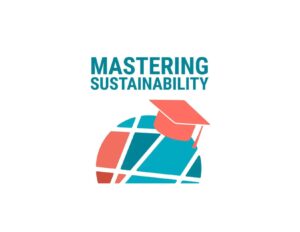In the financial sector, innovation is often a game of numbers — higher returns, lower risks, and bigger profits. But what if the same financial mechanisms that drive Wall Street could also fuel social and environmental well-being? This isn’t a hypothetical question; it’s the core premise of Peace Finance, a burgeoning asset class that the Peace Innovation Lab and Institute has been nurturing for years. Just as venture capital revolutionized the tech industry, Peace Finance has the potential to redefine the social impact of investment.
The Peace Innovation Lab’s Contribution
The Peace Innovation Lab has been a pioneer in the development of Peace Finance, laying the groundwork through initiatives like the Peace Data Standard. This tool measures the positive peace footprint within corporate enterprises, offering a tangible metric for social impact. Through organizing summits and fostering interdisciplinary collaborations, we’ve been building the ecosystem that Peace Finance needs to thrive.
What is Peace Finance?
Peace Finance is more than just a feel-good investment strategy; it’s a calculated approach to creating long-term value by investing in social cohesion and human flourishing. It’s akin to investing in infrastructure for societal well-being, with the added benefit of risk mitigation.
Financial Instruments for Peacebuilding
Peace Bonds
Imagine a municipal bond, but instead of funding a new highway or school, you’re investing in social cohesion and human flourishing. Peace Bonds offer tax incentives or other financial benefits, making them a viable alternative to traditional bonds. The proceeds are directed towards peacebuilding initiatives, which in turn create a more stable environment and reduce long-term risks.
Impact-Linked Debentures
These bonds function like performance-based contracts. Yields are directly tied to specific social outcomes, such as reduced crime rates or increased school attendance. It’s a win-win: societal well-being improves, and investors see higher returns.
Social Fabric Index Funds
Think of these as the ESG funds of peacebuilding. These funds only include companies that meet specific criteria for contributing to social well-being. It’s a way to diversify a portfolio while also promoting corporate responsibility.
Humanity-Nature Swaps
These financial contracts allow companies to exchange the risks and rewards of investing in social and environmental initiatives. It’s like hedging against market volatility, but the underlying asset is societal stability or environmental sustainability.
Tech-Enabled Peace Finance
Blockchain for Transparency
Blockchain can serve as the ledger that tracks every dollar invested in peacebuilding, much like how it’s used in supply chain verification. This ensures accountability and builds investor confidence.
AI-Driven Impact Assessment
Artificial Intelligence can offer real-time analytics on the social impact of investments, allowing for portfolio adjustments that maximize both financial returns and societal benefits.
A Call to Action for Fintech Entrepreneurs and Finance Professionals
- Research and Development: The first step is to develop these financial instruments to be both profitable and impactful. This requires rigorous back-testing and risk assessment.
- Collaboration: Partnering with NGOs and governmental bodies can provide the on-the-ground insights needed to direct investments most effectively.
- Innovation: The fintech sector has the technological expertise to develop the platforms and algorithms that will power Peace Finance.
- Advocacy: The concept of Peace Finance needs champions within the financial community to gain traction and credibility.
Conclusion
Peace Finance represents an untapped market with significant growth potential. It offers a way to diversify portfolios, mitigate long-term risks, and contribute to social stability. For corporate executives, it’s an opportunity to lead in a space that aligns financial strategy with corporate responsibility, without sacrificing returns.
The question is not whether Peace Finance will become a reality, but who will take the initiative to shape this emerging market. The potential for impact and returns is significant; the time to act is now.





